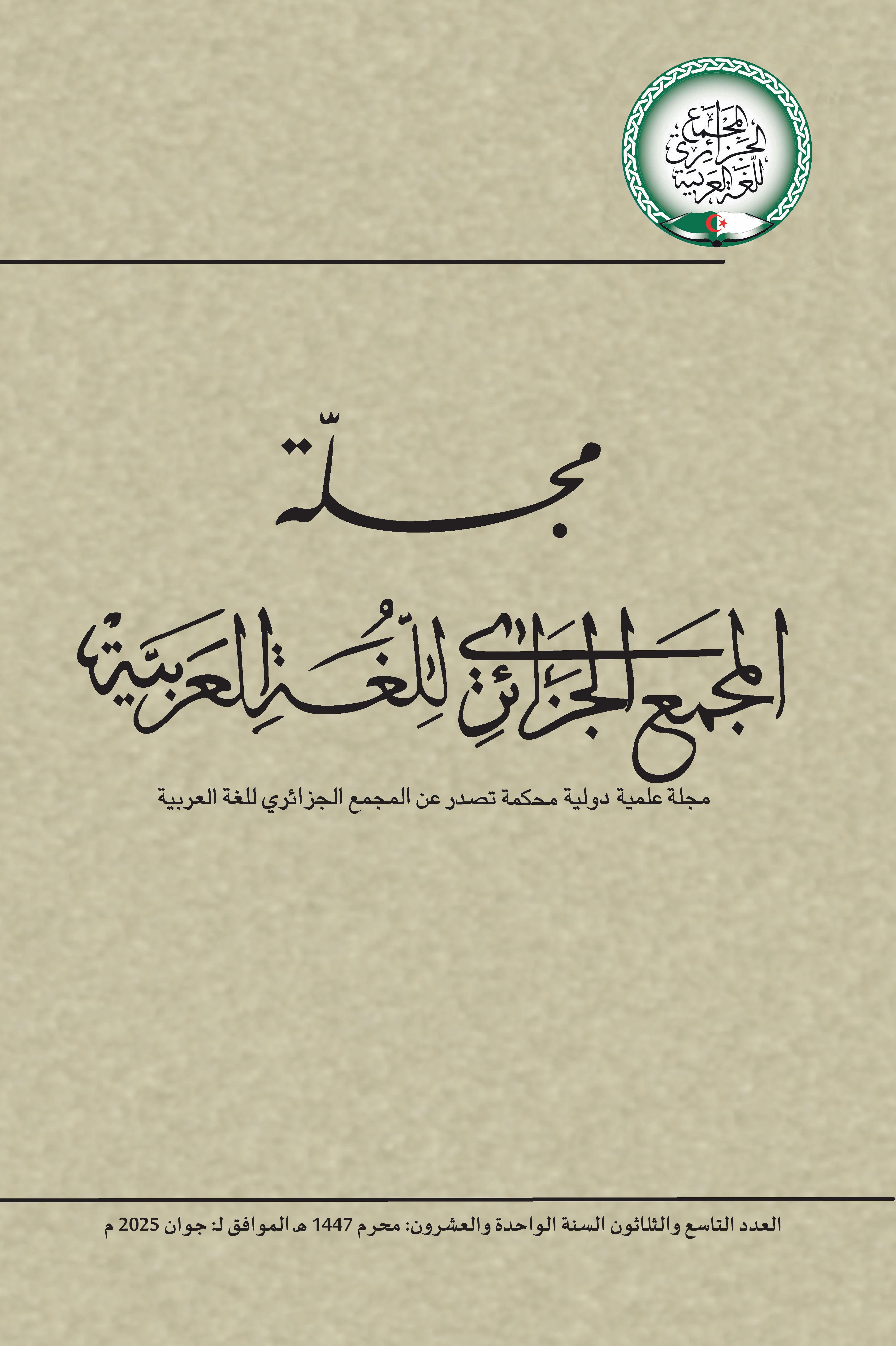The Importance Of Acoustic Analysis In Linguistic Studies: Emphasis And Long Vowels In Arabic Language As Model
DOI:
https://doi.org/10.70443/jaaal.v21i1.301Keywords:
Acoustic analysis, linguistic phenomena, Arabic phonetics, Arabic vowels, emphatic consonantsAbstract
Acoustic analysis provides objective insights into speech production by measuring key acoustic parameters. In Arabic linguistics, it enables precise study of phonetic features such as consonant emphasis and vowel contrast, which are difficult to assess through auditory analysis alone. This article explores the historical evolution of acoustic analysis, its key parameters, and its applications in language learning, speech therapy, and linguistic research. The findings highlight the method’s role in improving pronunciation training, diagnosing speech disorders, and advancing Arabic phonetics through AI-driven tools and interdisciplinary collaboration.
Downloads
References
Al-Ani, S. H. (1970). Arabic phonology: An acoustical and physiological investigation. Mouton. DOI: https://doi.org/10.1515/9783110878769
Alotaibi, Y., & Hussain, M. (2016). Acoustic characteristics of Arabic vowels: A comparative study of Modern Standard Arabic and Qassimi dialect. Journal of the Acoustical Society of America, 139(1), 310–325. https://doi.org/10.1121/1.4939894 DOI: https://doi.org/10.1121/1.4939894
Al-Tamimi, J., & Khattab, G. (2018). Articulatory and acoustic correlates of pharyngealization in Arabic. Journal of Phonetics, 71, 306–325. https://doi.org/10.1016/j.wocn.2018.09.008 DOI: https://doi.org/10.1016/j.wocn.2018.09.010
Boersma, P., & Weenink, D. (2023). Praat: Doing phonetics by computer (Version 6.3) [Computer software]. https://www.praat.org
Boula de Mareüil, P., & Zeroual, I. (2015). An acoustic study of emphasis in Moroccan and Algerian Arabic. Proceedings of the 18th International Congress of Phonetic Sciences, Glasgow. https://www.internationalphoneticassociation.org/icphs-proceedings/ICPhS2015/Papers/ICPHS0386.pdf
Domahs, U., Knaus, J. A., El Shanawany, H., & Wiese, R. (2014). The role of predictability and structure in word stress processing: An ERP study on Cairene Arabic and a cross-linguistic comparison. Frontiers in Psychology, 5, 1151. https://doi.org/10.3389/fpsyg.2014.01151 DOI: https://doi.org/10.3389/fpsyg.2014.01151
Duffy, J. R. (2020). Motor speech disorders: Substrates, differential diagnosis, and management (4th ed.). Elsevier.
Embarki, M. (2013). Acoustic correlates of emphasis in Arabic: Evidence from four dialects. Journal of Semitic Studies, 58(1), 135–160. https://doi.org/10.1093/jss/fgs042 DOI: https://doi.org/10.1093/jss/fgs042
Fant, G. (1960). Acoustic theory of speech production. Mouton.
Ferrat, K. (2024). The acoustic analysis of Arabic emphatic consonants using the Praat computer software. Algerian Academy of Arabic Language Journal, 20(1), 43–68. DOI: https://doi.org/10.70443/jaaal.v20i1.284
Ferrat, K. (2009). Analyse acoustique et évaluation de la rééducation de la maladie de Parkinson dans le milieu hospitalier algérien. Revue Al Lisaniyyat, 14–15, 59–78. DOI: https://doi.org/10.61850/allj.v14i2.419
Ferrat, K., & Guerti, M. (2012). A study of sounds produced by Algerian esophageal speaker. African Health Sciences, 4, 452–458. http://dx.doi.org/10.4314/ahs.v12i4.9 DOI: https://doi.org/10.4314/ahs.v12i4.9
Fouz-González, J. (2019). Using apps for pronunciation training: An empirical evaluation of the English File Pronunciation app. Language Learning & Technology, 23(1), 67–85. https://doi.org/10125/44664
Grabowski, E. (2023). Methodological trends in acoustic phonetic analysis. Proceedings of the 20th International Congress of Phonetic Sciences, ICPhS 2023, 984–988.
Heselwood, B. (2023). Pharyngeal articulations in Semitic languages. In Pharyngeal articulations in Semitic languages (pp. 112–167). Oxford University Press.
Khattab, G., & Al-Tamimi, J. (2013). Emphasis and vowel quality in Jordanian Arabic: An acoustic and articulatory study. Journal of Phonetics, 41(3), 163–173. https://doi.org/10.1016/j.wocn.2013.01.002 DOI: https://doi.org/10.1016/j.wocn.2013.01.002
Kent, R. D., & Kim, Y. J. (2003). Toward an acoustic typology of motor speech disorders. Clinical Linguistics & Phonetics, 17(6), 427–445. https://doi.org/10.1080/0269920031000086248 DOI: https://doi.org/10.1080/0269920031000086248
Ladefoged, P., & Johnson, K. (2014). A course in phonetics (7th ed.). Cengage.
Mitrofanova, O., & Tuller, L. (2021). Acoustic markers of vowel quality in Maghrebi Arabic dialects. Phonetica, 78(3), 231–260. https://doi.org/10.1159/000509875 DOI: https://doi.org/10.1159/000509875
Zawaydeh, B. A. (1999). The phonetics and phonology of gutturals in Arabic. Indiana University Linguistics Club Publications.
Zawaydeh, B., & de Jong, K. (2021). Arabic phonetics and phonology. De Gruyter.
Zeroual, I., Boula de Mareüil, P., Barkat-Defradas, M., Maamouri, H., & Belkessam, A. (2021). Emphasis production in Arabic-speaking children with dysarthria. International Journal of Language & Communication Disorders, 56(3), 567–581. https://doi.org/10.1111/1460-6984.12612 DOI: https://doi.org/10.1111/1460-6984.12612
Downloads
Published
Issue
Section
License
Copyright (c) 2025 Authors

This work is licensed under a Creative Commons Attribution-NonCommercial 4.0 International License.













 Majallatu Almajmaʻi Aljazāʼirīyi lillughati alArabīyah (Journal of Algerian Academy of the Arabic Language) is Published by
Majallatu Almajmaʻi Aljazāʼirīyi lillughati alArabīyah (Journal of Algerian Academy of the Arabic Language) is Published by